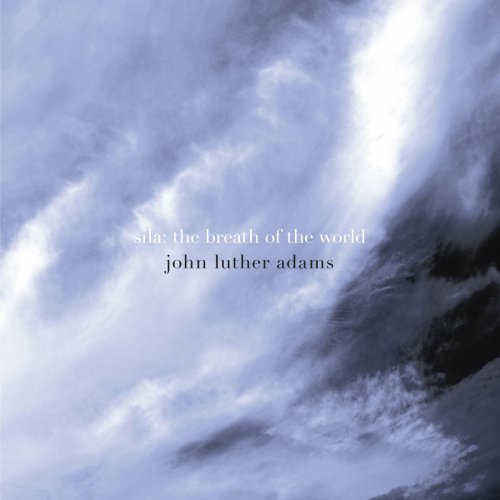
Various Artists - Sila: The Breath of the World (2022) Hi-Res
BAND/ARTIST: Various Artists
- Title: Sila: The Breath of the World
- Year Of Release: 2022
- Label: Cantaloupe Music
- Genre: Electronic, Ambient, Modern Classical
- Quality: FLAC 16/24 Bit (96 KHz / tracks+booklet)
- Total Time: 57:06 min
- Total Size: 250 MB / 1 GB
- WebSite: Album Preview
Tracklist:
01. Sila: Cloud 1 - Cloud 2
02. Sila: Cloud 3 - Cloud 4
03. Sila: Cloud 5 - Cloud 6
04. Sila: Cloud 7 - Cloud 8
05. Sila: Cloud 9 - Cloud 10
06. Sila: Cloud 11 - Cloud 12
07. Sila: Cloud 13 - Cloud 14
08. Sila: Cloud 15 - Cloud 16
01. Sila: Cloud 1 - Cloud 2
02. Sila: Cloud 3 - Cloud 4
03. Sila: Cloud 5 - Cloud 6
04. Sila: Cloud 7 - Cloud 8
05. Sila: Cloud 9 - Cloud 10
06. Sila: Cloud 11 - Cloud 12
07. Sila: Cloud 13 - Cloud 14
08. Sila: Cloud 15 - Cloud 16
Throughout the history of classical music, nature has been portrayed countless times. Beethoven's Symphony No. 6, Debussy's La Mer, and Vivaldi's The Four Seasons are three obvious examples. The work of American composer John Luther Adams is inspired by the natural world, particularly Alaska, where he lived for many years. But some of his pieces aren't simply musical portrayals of natural phenomena: they come off as being of, rather than about, nature.
Sila: the Breath of the World is a case in point. (The work's title comes from an Inuit word that refers to breath, spirit, the interconnectedness of everything on earth.) It is written for five separate ensembles—brass, percussion, strings, woodwinds, and voices—that make up a whole. Performers decide how quickly to move through their individual parts. Each note or phrase lasts the length of an exhalation. The musical material is rooted in the first sixteen overtones of a low B flat. There is no conductor. Since some choices are left to musicians, each realization of the score is unique.
In live performance, musicians are able to respond to the sound in toto. This version works a little differently. Due to pandemic-enforced rules around physical distancing, each group was recorded separately without hearing the others. Doug Perkins, a percussionist who served as music director on the album, layered the five parts to create this particular instantiation of the composition. The result—performed by Jack Quartet, The Crossing (a chamber choir), and musicians from the University of Michigan—is wonderfully organic.
Opening with a low rumble, Sila immediately intrigues. The piece, often marked by hovering sound-masses and long-held tones, continually unfolds from there. Even though the overall form can be hard to perceive, there is a sense of mysterious, moment-to-moment evolution. The shifting relations between the five groups as they move between background and foreground is compelling. And the changing degree of aural density, as the music morphs from a punctum to a broad swath and back again, can be dramatic. Throughout, there is a sense of sublime awe. Sila conjures the motion of tectonic plates, the ocean's inexorable rhythms—and the breath of a planet.
Sila: the Breath of the World is a case in point. (The work's title comes from an Inuit word that refers to breath, spirit, the interconnectedness of everything on earth.) It is written for five separate ensembles—brass, percussion, strings, woodwinds, and voices—that make up a whole. Performers decide how quickly to move through their individual parts. Each note or phrase lasts the length of an exhalation. The musical material is rooted in the first sixteen overtones of a low B flat. There is no conductor. Since some choices are left to musicians, each realization of the score is unique.
In live performance, musicians are able to respond to the sound in toto. This version works a little differently. Due to pandemic-enforced rules around physical distancing, each group was recorded separately without hearing the others. Doug Perkins, a percussionist who served as music director on the album, layered the five parts to create this particular instantiation of the composition. The result—performed by Jack Quartet, The Crossing (a chamber choir), and musicians from the University of Michigan—is wonderfully organic.
Opening with a low rumble, Sila immediately intrigues. The piece, often marked by hovering sound-masses and long-held tones, continually unfolds from there. Even though the overall form can be hard to perceive, there is a sense of mysterious, moment-to-moment evolution. The shifting relations between the five groups as they move between background and foreground is compelling. And the changing degree of aural density, as the music morphs from a punctum to a broad swath and back again, can be dramatic. Throughout, there is a sense of sublime awe. Sila conjures the motion of tectonic plates, the ocean's inexorable rhythms—and the breath of a planet.
Year 2022 | Classical | Electronic | Ambient | FLAC / APE | HD & Vinyl
As a ISRA.CLOUD's PREMIUM member you will have the following benefits:
- Unlimited high speed downloads
- Download directly without waiting time
- Unlimited parallel downloads
- Support for download accelerators
- No advertising
- Resume broken downloads


